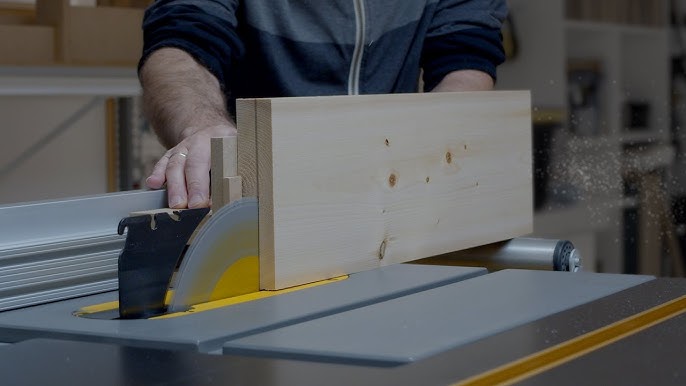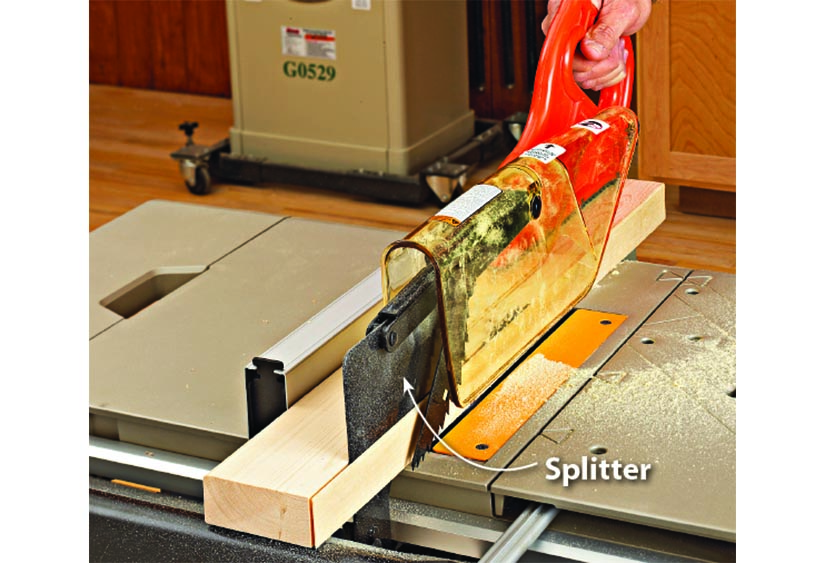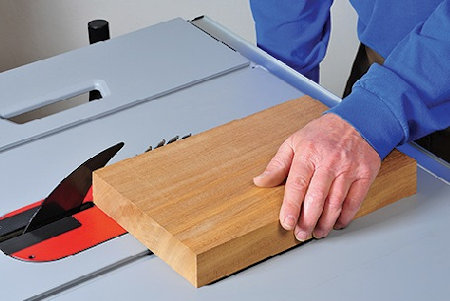If you’ve ever wondered about the maximum thickness of wood that can be cut on a table saw, look no further! This article is here to answer that burning question for you. By the end, you’ll have a clear understanding of the limitations and capabilities of your trusty table saw, ensuring you can tackle any woodworking project with confidence. So, let’s get started and find out just how thick that wood can be on a table saw!
Factors that Determine the Thickest Wood You Can Cut
When it comes to determining the thickest wood you can cut on a table saw, there are several factors to consider. These factors will ultimately determine the capabilities of your table saw and what materials it can handle. Let’s take a closer look at these factors.
Type and Power of the Table Saw
The type and power of the table saw play a crucial role in determining the thickest wood you can cut. Different types of table saws have varying power capacities, which directly affects their ability to cut through thick materials. For example, a contractor table saw might not have as much power as a cabinet table saw, making it more suitable for cutting thinner pieces of wood. It’s important to ensure that your table saw has enough power to handle the thickness of the wood you intend to cut.
Size of the Saw Blade
Another factor to consider is the size of the saw blade. Table saws generally come with blades of different diameters, such as 8, 10, or 12 inches. The larger the blade diameter, the thicker the wood it can cut. A larger blade can make deeper cuts, allowing you to handle thicker pieces of wood. However, it’s essential to check the specifications of your table saw to see if it can accommodate larger blades and if it is suitable for cutting thicker materials.
Saw Blade’s Cutting Depth
In addition to the size of the blade, you’ll also want to consider the cutting depth it can achieve. The cutting depth refers to how deep the blade can penetrate into the wood. If you’re aiming to cut thick wood, you’ll need a table saw that has a sufficient cutting depth. It’s important to note that the cutting depth of a table saw can vary depending on the make and model. Therefore, it’s crucial to check the specifications of your specific table saw to ensure it can handle your desired cutting depth.
Saw Blade’s Kerf Width
The kerf width of the saw blade is another factor that can influence the thickness of wood you can cut on a table saw. The kerf is the width of the cut made by the saw blade. A wider kerf means that more material is removed, resulting in a thinner remaining piece of wood. In contrast, a narrower kerf allows for a thicker remaining piece of wood. It’s important to consider the kerf width of your saw blade when cutting thick wood, as it will affect the overall thickness of the final piece.

This image is property of i.ytimg.com.
Understanding Table Saw Blade Specs
To make informed decisions about cutting thick wood on a table saw, it’s crucial to understand the various specifications of the table saw blade. Here are the key specifications to consider:
Diameter of the Blade
The diameter of the blade refers to the size of the blade itself. It is measured in inches and can vary from 8 to 12 inches for most table saws. As mentioned earlier, a larger blade diameter generally allows for thicker wood cuts.
Arbor Size
The arbor size refers to the diameter of the hole in the center of the blade that fits onto the table saw’s arbor. It’s essential to ensure that the arbor size of your blade matches the arbor size of your table saw. The arbor size can vary, so it’s crucial to check the specifications to prevent compatibility issues.
Teeth Count
The number of teeth on the blade plays a significant role in the quality of the cut and the speed at which the wood is removed. Blades with more teeth tend to provide smoother cuts but may be slower. Conversely, blades with fewer teeth remove material faster but can result in rougher cuts. When cutting thicker wood, it’s generally recommended to use a blade with fewer teeth to prevent overheating and ensure efficient cutting.
Tooth Configuration
The tooth configuration refers to the pattern and arrangement of the teeth on the blade. There are different tooth configurations, such as flat-top, alternate top bevel (ATB), and triple chip grind (TCG). Each configuration has its own advantages and is suitable for specific cutting tasks. It’s important to consider the tooth configuration when cutting thick wood to ensure optimal performance and minimize any potential issues.
Tooth Angle
The tooth angle refers to the angle at which the teeth are positioned on the blade. Common tooth angles include positive, negative, and neutral angles. The tooth angle can affect the cutting efficiency and the quality of the cut. Different tooth angles are better suited for specific woodworking tasks, so it’s crucial to choose the appropriate tooth angle for cutting thick wood on a table saw.
Hook Angle
The hook angle refers to the angle at which the teeth lean forward or backward in relation to the centerline of the blade. A positive hook angle means the teeth lean forward, while a negative hook angle means the teeth lean backward. The hook angle influences the aggressiveness of the cut and the feed rate. When cutting thick wood on a table saw, a lower hook angle is generally recommended to prevent kickback and ensure better control during the cut.
Kerf Width
The kerf width, as mentioned earlier, is the width of the cut produced by the blade. It’s important to consider the kerf width when cutting thick wood to ensure that the remaining piece meets your desired thickness. Different blades have different kerf widths, so it’s crucial to choose a blade that aligns with your requirements.
This image is property of qph.cf2.quoracdn.net.
Safety Considerations for Cutting Thick Wood on a Table Saw
Working with a table saw can be potentially dangerous, especially when cutting thick wood. Here are some essential safety considerations to keep in mind:
Using a Riving Knife or Splitter
A riving knife or splitter is an important safety feature on a table saw. It helps prevent kickback, which can occur when the wood gets caught on the back of the blade and forcefully thrown back towards the operator. When cutting thick wood, it’s essential to use a riving knife or splitter to ensure stability and reduce the risk of kickback.
Using a Push Stick or Featherboard
When cutting thick wood on a table saw, it’s crucial to maintain a safe distance from the blade. Using a push stick or featherboard can help keep your hands away from the blade and ensure a secure grip on the workpiece. These tools provide added control and reduce the risk of accidents.
Wearing Personal Protective Equipment (PPE)
Personal Protective Equipment (PPE) is vital when operating a table saw, especially when working with thick wood. Make sure to wear safety glasses, hearing protection, and gloves to protect yourself from potential hazards. Additionally, consider using a dust mask or respiratory protection to safeguard against fine wood particles or dust.
Maintaining Proper Table Saw Maintenance and Adjustment
Regular maintenance and proper alignment of your table saw are crucial for safe and accurate cuts. Ensure that the blade is properly aligned, the fence is parallel to the blade, and all safety features are functioning correctly. Regularly clean the saw and check for any loose or damaged parts that may affect the stability and safety of the machine.

This image is property of i.ytimg.com.
Techniques for Cutting Thicker Wood on a Table Saw
When faced with the challenge of cutting thicker wood on a table saw, there are several techniques you can employ to achieve clean and accurate cuts. Here are some effective techniques to consider:
Multiple Passes
If the thickness of the wood exceeds the cutting depth capacity of your table saw, you can make multiple passes to achieve the desired depth. Start by making a shallow cut and gradually increase the depth with each subsequent pass. Remember to use a push stick or featherboard to maintain control and ensure safety during each cut.
Raising the Blade Height
Another technique is to increase the blade height. By raising the blade, you can increase the cutting depth, allowing you to handle thicker pieces of wood. However, it’s crucial to adjust the blade height in small increments to prevent overpowering the motor and to maintain stability.
Increasing the Cutting Depth
Some table saws have the option to adjust the cutting depth. By adjusting the cutting depth to its maximum capacity, you can handle thicker pieces of wood in a single pass. However, it’s important to ensure that your table saw is designed to handle such depths and can handle the load without compromising safety or performance.

This image is property of static.onecms.io.
Alternatives to Table Saw for Cutting Thick Wood
If your table saw is not suitable for cutting thick wood or you’re looking for alternative options, here are three alternatives worth considering:
Circular Saw with a Straight Edge Guide
A circular saw with a straight edge guide can be an effective alternative for cutting thick wood. Attach a straight edge guide to the wood to ensure a straight and accurate cut. Although it may require more effort and precision, a circular saw can handle thicker materials when equipped with the appropriate blade.
Track Saw
Track saws are specifically designed for making precise and straight cuts in thick materials. They consist of a circular saw mounted on a guide rail or track system that ensures accuracy and stability. By following the track, you can make clean and controlled cuts without the need for a table saw.
Band Saw
A band saw is an excellent alternative for cutting thick wood, especially if you require intricate cuts or curved shapes. Band saws have a narrow blade that moves in a continuous loop, allowing for versatile and precise cuts. However, it’s important to note that band saws may not offer the same level of precision as a table saw for straight cuts.

This image is property of www.toolboxtoday.com.
Conclusion
Determining the thickest wood you can cut on a table saw involves considering several factors such as the type and power of the table saw, the size of the saw blade, the saw blade’s cutting depth, and the kerf width. Understanding table saw blade specs is essential for selecting the right blade for cutting thick wood. Safety considerations include using a riving knife or splitter, employing push sticks or featherboards, wearing personal protective equipment, and maintaining proper table saw maintenance. Techniques such as multiple passes, blade height adjustment, and increasing the cutting depth can help cut thicker wood on a table saw. If a table saw is not suitable, alternative options like a circular saw with a straight edge guide, a track saw, or a band saw can be considered. By considering these factors, specs, safety measures, and techniques, you can confidently navigate the world of cutting thick wood on a table saw.
